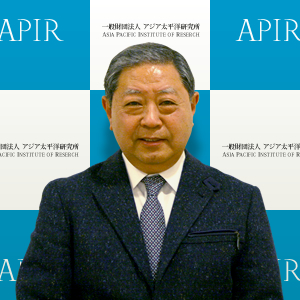Is It Abenomics or Post-Disaster Recovery? A Counterfactual Analysis
関連論文
-

Population as a Source of Long−Term Growth: From Malthus to Japan’s Postmodern Regime
Discussion Papers
Discussion Paper » Discussion Paper
/ DATE :
AUTHOR :
HAYASHI, ToshihikoABSTRACT
This paper introduces a simple macroeconomic time series model incorporating a key concept of GDP elasticity with respect to population (population elasticity). Using this model, we conducted empirical analyses of 158 countries each covering 25 to 180 years of history. As a result, we found first that the estimated population elasticity demarcated the countries according to regime, showing clearly whether a country was in the ‘Malthusian regime’, in the ‘modern growth regime’ or in the ‘postmodern regime’. We found that the poorest countries as well as some oil-rich countries were in the Malthusian regime. The modern growth regime prevailed in most European, Asian and American countries in the 20th century. We then predicted long-term real GDP for each country while they stayed in modern growth regimes. Third, we observed that both Germany and Japan went into a postmodern regime after a demographic transformation. Focusing on Japan, we argued that if the nation remained in the modern growth regime, it would face a precipitous decline in GDP. We suggested that Japan must reduce dependence on population as a source of growth in the postmodern era. This lesson might be important for the two thirds of countries in the world that are expected to enter a postmodern regime around the middle of this century.
-

Democracy and Globalization Are not Prerequisites for Higher Income: A Cross Country Analysis
Discussion Papers
Discussion Paper » Discussion Paper
/ DATE :
AUTHOR :
HAYASHI, ToshihikoABSTRACT
This paper reports results from a cross country econometric analyses over 150 countries pertaining to possible correlation between per capita GDP and democracy, corruption, globalization and human development indices. Our findings include 1) of the four indices, the human development index has the strongest influence on per capita GDP and its growth, 2) fighting corruption pays as higher levels of cleanliness and transparency tend to raise per capita GDP, but less so in lower income economies, 3) the globalization index does not show any significant correlation with per capita GDP, and 4) the democracy index is not significantly correlated with per capita GDP or growth. but in some country it can hinder growth. The moral of our investigation is that economic growth does not automatically lead to better democracy, and higher per capita income does not warrant higher level of democracy. Democracy is not a means to higher income, but rather, it is an independent value in itself.
-

A TPP Headquarters should be Established in Osaka
Policy Brief
Policy Brief » Policy Brief
/ DATE :
AUTHOR :
HAYASHI, ToshihikoABSTRACT
In order to support the successful implementation and maintenance of the Trans Pacific Partnership agreement, the Japanese government should establish a permanent TPP Headquarters in Japan, with 300 employees and an annual expenditure of 10 billion yen.
The government should secure the necessary land and infrastructure needed to house the TPP Headquarters.
The TPP Headquarters should be a fully endowed international organization with diplomatic immunity, hosting Ambassadors from each participant country and from non-member countries.
Operational costs for the Headquarters should be covered by contributions from member countries.
-

The Philippines – Improving institutions,
Discussion Papers
Discussion Paper » Discussion Paper
/ DATE :
AUTHOR :
TIUSONCO, Jose II Opalalic / HAYASHI, ToshihikoABSTRACT
Saddled with internal problems and external shocks the past three decades (1980 to 2010), the Philippines is back on its feet and getting ready to be fully integrated into Asia’s regional economy with better institutional and governance quality, focused public sector investments in infrastructure and human capital development, and armed with sustainable and dynamic labor force. It has achieved positive changes – significant progress – in governance and economic performance in recent years. It appears to be on track in addressing the critical development constraints to growth and poverty reduction through its inclusive growth agenda.
Noted for its English-speaking, young and mobile human capital, the Philippines has been a services- and consumption-driven economy with significant contributions from remittances of overseas Filipino workers and the information technology-business process management (IT-BPM). However, its economy-wide productivity growth lagged and foreign investments stagnated for about three decades – between 1980 and 2009.
Human capital is seen as among the strongest assets of the Philippines. Bringing in foreign –and domestic – capital investments are necessary in transforming human capital into productive labor, thereby creating an enduring economic growth structure and poverty reduction. Private investments are critical in addressing key challenges and opportunities on i) persistent problem of unemployment and underemployment, ii) reviving the manufacturing sub-sector, and iii) improving technological innovation and production capability.
Sustaining and scaling-up institutional reforms are necessary in getting out of the “middle income trap” and ultimately achieving prosperity. This is not going to be easy; and, yes, leadership and good governance are key factors towards this end.

